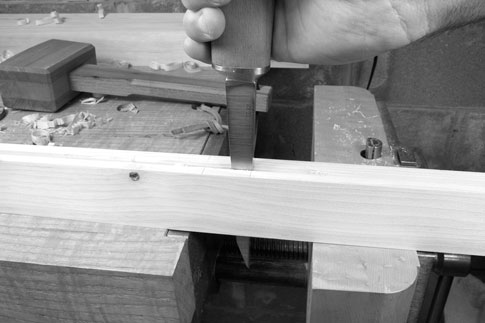
Nothing drives a trained journalist crazier than an unanswered question.
As you probably know, the book “The Joiner and Cabinet Maker” doesn’t name the original author. He (and it almost certainly was a “he”) didn’t put his name on the book for a variety of reasons:
1. Perhaps the work was too “lowbrow” for someone of high station. 2. The original publisher, Charles Knight, didn’t want the author known for some reason, or Knight simply didn’t think it would help sales of the book. 3. The work was written by someone with zero credibility.
Now, before you cast your lot in with one of these three theories, here are a couple other data points. For starters, many of these “Guide to Trade” series of books from Charles Knight were written anonymously. “The Printer,” one of the other truly notable books in the series, has a fictional point of view much like “The Joiner and Cabinet Maker,” but it has no author listed. As do many other books in the series.
So “The Joiner and Cabinet Maker” wasn’t an anomaly in the “Guide to Trade” series.
Could the author have been someone who didn’t know jack-crap about woodworking? I think the evidence is mixed here. Though the language and the book’s “trade practices” match up with many other accounts, there is some evidence that some things are awry.
Point 1: Which comes first: The groove or the mortise? When Thomas the young apprentice is building the “Chest of Drawers,” he builds an elaborate frame-and-panel chest back. It’s a lot of work. Maybe too much work. As I noted in the book, I haven’t seen any chests from this era built like this. And, as Don McConnell from Clark & Williams, pointed out: The order of operations in building the back is odd.
Thomas plows a groove to hold the panels. Then he cuts the mortises. Trade practice was (and still is) to cut the mortises first and then plow the groove second. This procedure has a lot more forgiveness built in than the way Thomas built the back.
In other words, the process didn’t ring entirely true.
Second point: The book’s discussion of dovetailing the “Chest of Drawers” is odd in a few points. Though the book insists that pins are cut first, the book then explains an operation where cutting pins first is just silly: Dovetailing three rails into the top edge of the carcase sides. It’s foolish to cut the pins first here.
And while we are on the topic of dovetails, the language used by the author was a bit odd to me at one point. Though “The Joiner and Cabinet Maker” calls the joint a “dovetail,” the joint is separated into “pins” and “the holes that the pins fit into.” Other accounts from the period separate the joint into “pins” and “tails,” just like we do today. It’s just odd.
I don’t know what all this adds up to. Honestly, most of the language and techniques line up with what we know of trade practice in early 19th-century England. But the exceptions do stick in my craw.
I have some ideas about how to track down the author and am working on it now. None of them are easy or fast. So does who wrote the book really matter?
— Christopher Schwarz